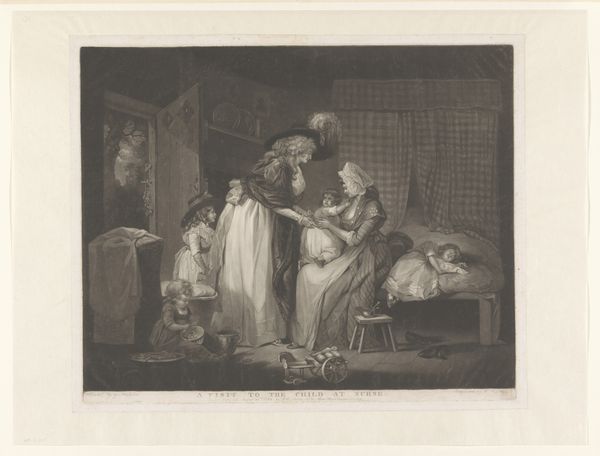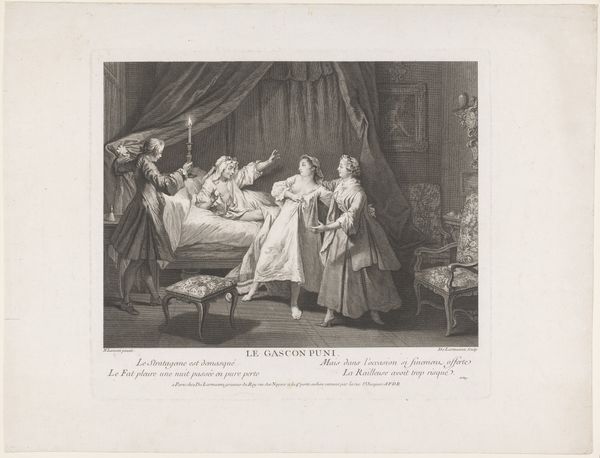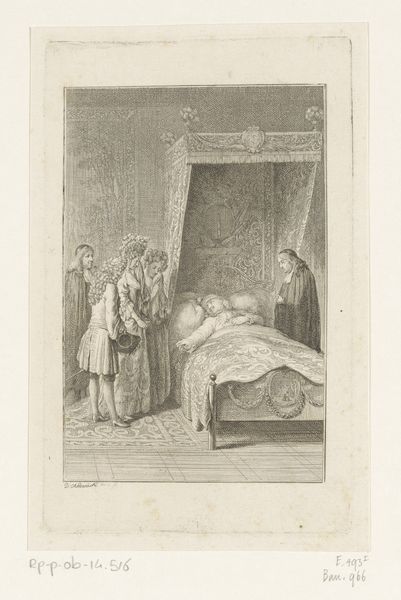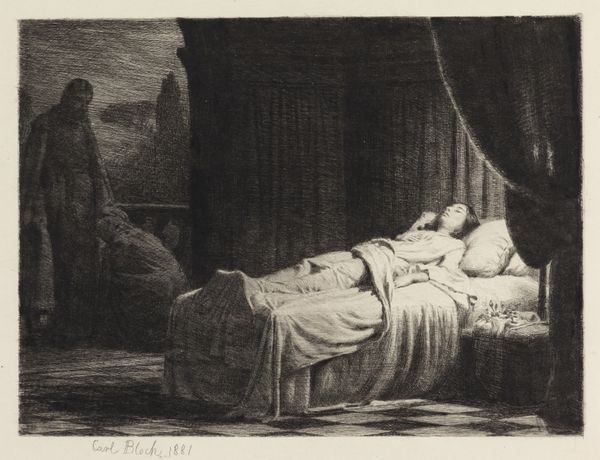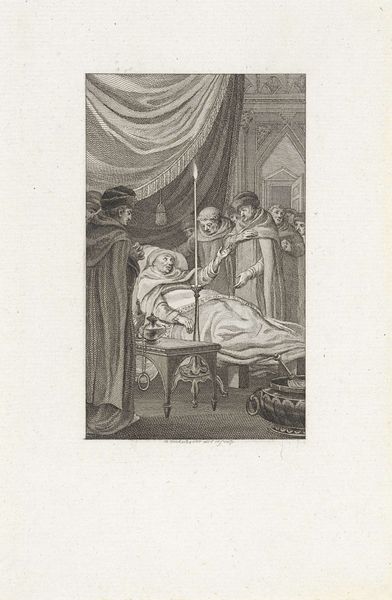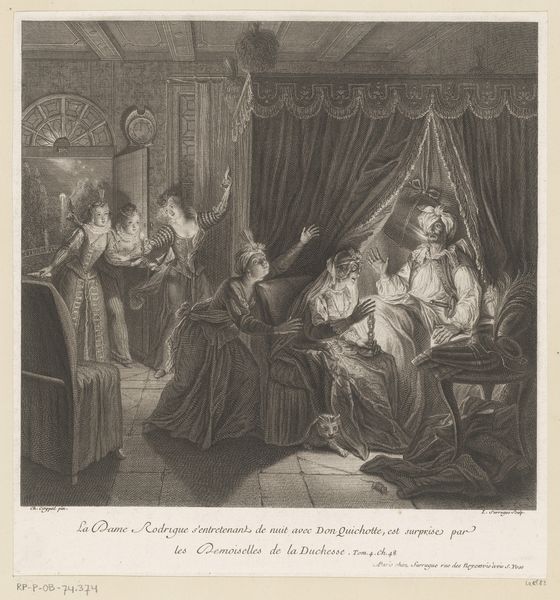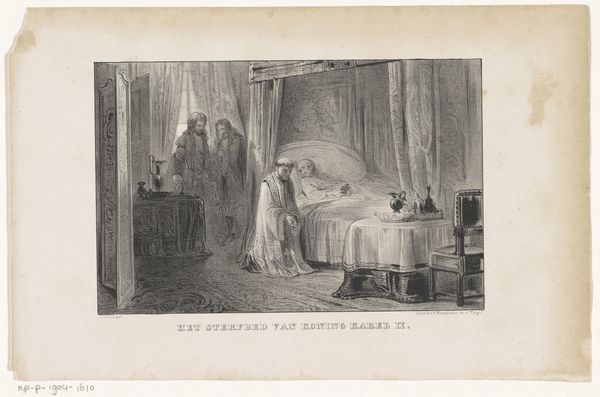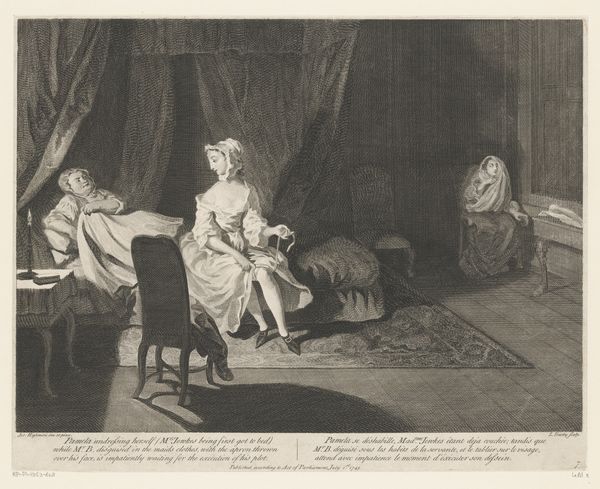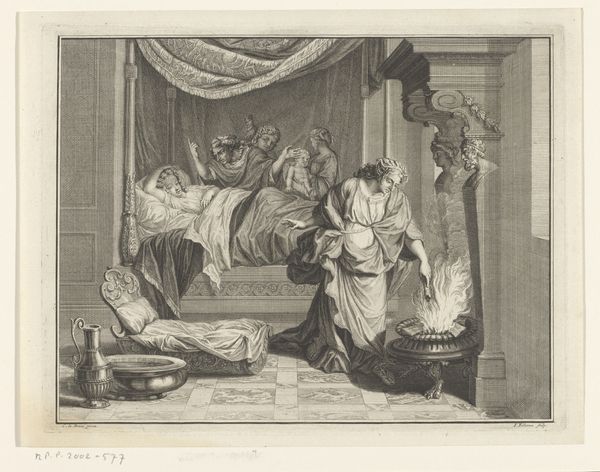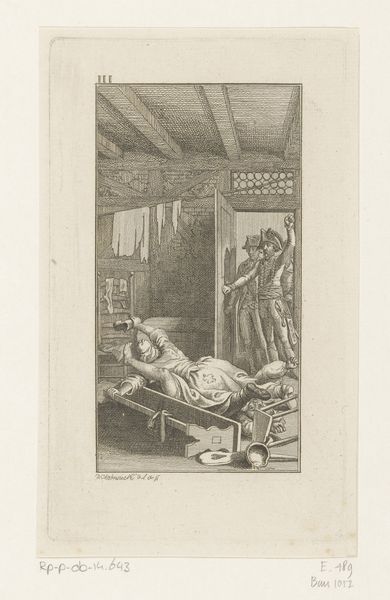
print, engraving
#
narrative-art
# print
#
pencil sketch
#
classical-realism
#
charcoal drawing
#
figuration
#
pencil drawing
#
history-painting
#
engraving
Dimensions: height 440 mm, width 523 mm
Copyright: Rijks Museum: Open Domain
Curator: The tonal gradations in this 1773 engraving, "Penelope wordt gewekt door Euryclea" by Thomas Burke, are incredibly subtle. Note the soft rendering of the figures. Editor: It has a sort of melancholy grandeur, doesn’t it? The smoky grayscale palette feels almost dreamlike, appropriate considering the scene. There's a stark contrast between the crisp lines defining Penelope and the almost vaporous shadows in the background. Curator: Burke chose to represent a pivotal moment from The Odyssey. We see Penelope, Odysseus's wife, still asleep and seemingly in despair. She is being awakened by her loyal nurse, Euryclea, who is bringing news of Odysseus's return. The other female figure is another servant. The image carries a lot of the emotional weight around long waiting and anticipation. Editor: Symbolically, the dark tonality likely carries associations with Penelope’s prolonged grief and loneliness. That contrasts sharply with the single, flickering flame on the right; it provides both visual light and, perhaps, hope. Its placement—isolated and yet powerful—serves as a beautiful compositional counterpoint to Penelope’s figure. Curator: Precisely! Light in such images always conveys the presence of hope or divine knowledge breaking into darkness, signifying that moment when inner grief and anticipation transitions to reality. The scene emphasizes not just Odysseus’s physical return but also the psychological journey toward the re-establishment of order and justice. Remember, the image distills cultural memories—both heroic and domestic. It captures something timeless in human relationships, particularly of faithful devotion, with a heavy and layered story. Editor: Yes, the overall impression is powerfully balanced—dark and light, despair and hope, quiescence and action—captured expertly by Burke's compositional choices and mastery of engraved line. And while heavy in historical implications, Burke manages to produce a deeply personal glimpse into one intimate moment. Curator: The image as an artifact underscores not only how ancient narratives continually resonate in visual form but also speaks to the enduring power of those stories to define cultural norms. Editor: Ultimately, I am most impressed with how a classical scene is so convincingly rendered, its emotional timbre carried by skillful use of monochromatic tone.
Comments
No comments
Be the first to comment and join the conversation on the ultimate creative platform.
